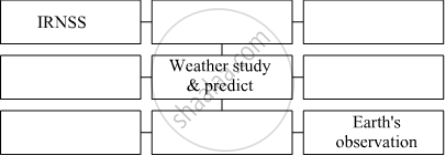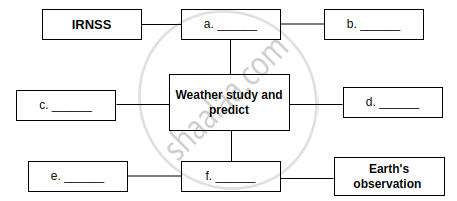Advertisements
Advertisements
प्रश्न
Distinguish between:
High Earth orbit - Medium Earth orbit.
उत्तर
| High earth orbits | Medium earth orbits | |
| 1. | Height from the earth’s surface for these orbits is greater than or equal to 35780 km. | Height from the earth’s surface for these orbits is between 2000 km and 35780 km. |
| 2. | Satellites revolving in these orbits take around 24 hours to complete one revolution around the earth. | Satellites revolving in these orbits take around 2 to 24 hours to complete one revolution around the earth. |
| 3. | The satellites revolving in these orbits appear stationary with respect to earth. | The satellites revolving in these orbits do not appear stationary with respect to earth. |
| 4. | Satellites revolving in these orbits can be used for carrying signals for telephone, television etc. and also in the applications like meteorology. | Satellites revolving in these orbits can be used in the study of polar regions. |
| 5. | Example: IBEX (Interstellar Boundary Explorer) revolves in this orbit. | Examples: GLONASS (Global Navigation Satellite System) and Telstar – 1 revolve in these orbits. |
APPEARS IN
संबंधित प्रश्न
Fill in the blank and explain the statement with reasoning:
If the height of the orbit of a satellite from the earth surface is increased, the tangential velocity of the satellite will ......
Why are geostationary satellites not useful for studies of polar regions?
Complete the following table.

Solve the problem.
How much time a satellite in an orbit at height 35780 km above earth's surface would take, if the mass of the earth would have been four times its original mass?
Considering first correlation, complete the second.
Hubble telescope : At 569 km above the earth’s surface
Orbit of Hubble telescope : .............................
Mahendra and Virat are sitting at a distance of 1 metre from each other. Their masses are 75 kg and 80 kg respectively. What is the gravitational force between them? G = 6.67 x 10-11 Nm2/kg2
A group of students from COEP Pune sent a small satellite _______ through ISRO in 2016.
The function of a satellite launcher is based on Newton's second law of motion.
Calculate the critical velocity of the satellite to be located at 35780 km above the surface of earth.
What is Medium Earth Orbit?
Note the relationship between the entries in all the three columns in the table and rewrite the table.
| Column-1 (Location) |
Column-2 Height from the earth’s surface (km) |
Column-3 g (m/s2) |
| Earth’s surface (average) | 8.8 | 0.225 |
| Mount Everest | 36.6 | 9.81 |
| Maximum height ever reached by manmade balloon | 400 | 9.8 |
| Orbit of a typical weather satellite | 35700 | 9.77 |
| Orbit of communication satellite | 0 | 8.7 |
Why are some satellites called geostationary?
The orbital velocity of the satellite depends on its ______.
Write down the formula of orbital velocity.
Calculate the time taken by a satellite for one revolution revolving at a height of 6400 km above the earth's surface with a velocity of 5.6 km/s.
Write the name of small satellite made by a group of students from COEP (College of Engineering, Pune) sent to the space through ISRO in 2016.
Complete the following equations:

